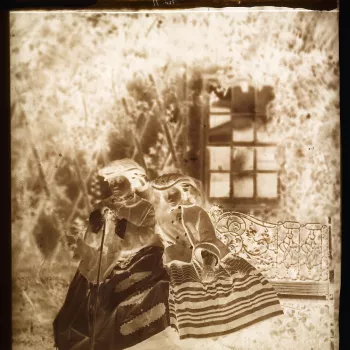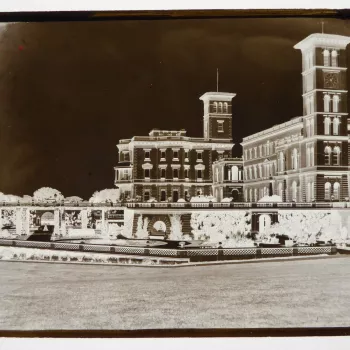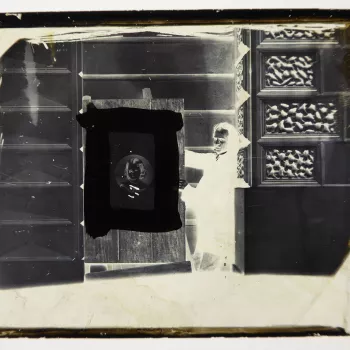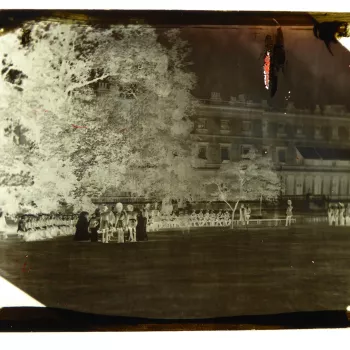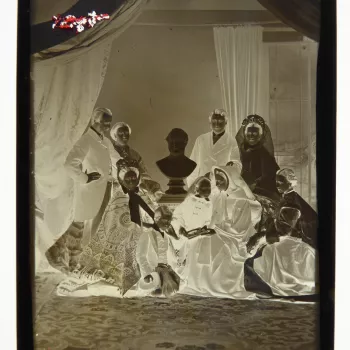Glass plate negatives
Albert and Victoria’s collection shows photographers’ working methods
Owing to Prince Albert (1819-61) and Queen Victoria’s (1819-1901) extensive commissioning of photographers, their collection includes a significant number of nineteenth-century glass plate negatives. Together, these objects form an important material record of early photographic processes and provide an insight into the working methods of many photographers, including Roger Fenton (1819-69), Frances Sally Day (1816-92), and John Jabez Edwin Mayall (1813-1901). Some negatives serve as valuable documents of the early means of recording works of art by photography, regularly featuring details omitted from the resulting photographs. Others reveal the editing and cataloguing process undertaken by photographers in association with the royal family. Where negatives have been scratched, it can be assumed the image was unfavourably received by the royal family. Numbers marked into the plate reveal cataloguing systems undertaken by the royal family since the nineteenth century.
This selection from the royal couple’s negative collection includes intimate family portraits, views of royal residences, reproductions of artworks and portraits of Crimean War veterans as well as notable Victorian personalities.




